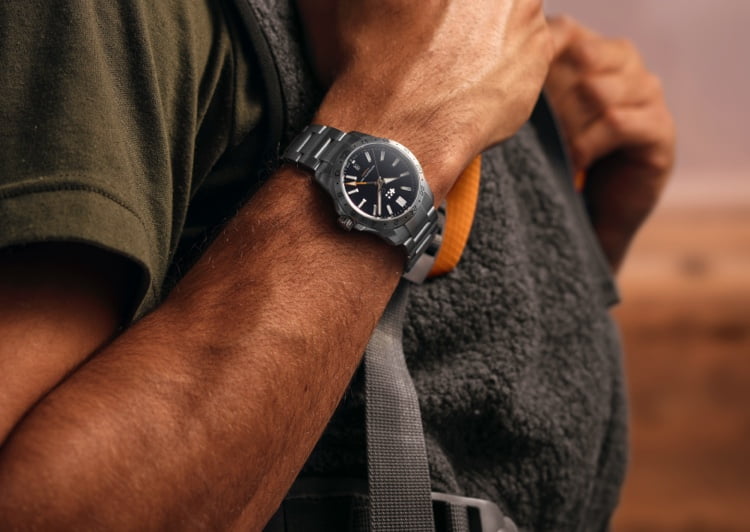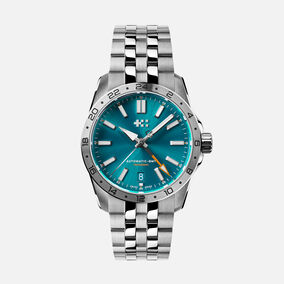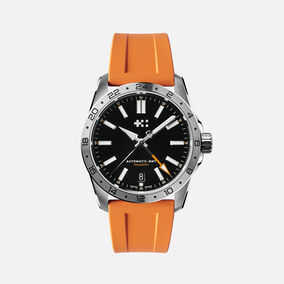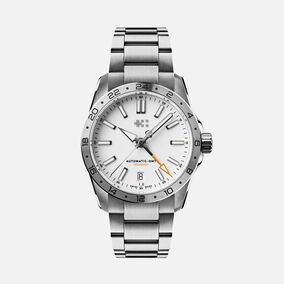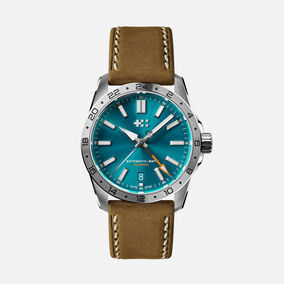Introducing the new C63 Sealander 36 GMT: tough yet handsome, innovative but unobtrusive, and the perfect travel companion whoever you are – and whatever your wrist size
When it comes to watchmaking, the 1950s is where the modern world began.
This was the decade when watchmakers effectively invented the tool watch and each year, it seemed, an icon was born: Breitling’s Navitimer; Omega’s Speedmaster; Rolex’s Submariner. We had specialist watches for pilots and racing drivers, engineers and railwaymen, explorers and doctors. And, thanks to James Bond (who first appeared in 1953), watches for spies – witness the Submariner (as seen in Goldfinger) and his trusty Oyster Perpetual.
It was also, of course, the start of the ‘Jet Age’, which took off with BOAC’s de Havilland Comets and went mainstream with Pan Am’s Boeing 707s in 1958. It had been just four years earlier that America’s unofficial flag carrier collaborated with Rolex to design the GMT-Master, to be issued to selected crews.
Though not the first GMT watch, it popularised the form, adding a distinctive 24-hour fourth hand that could be set to a second time zone, read from the bezel. Being able to tell both local time and GMT – required for aviation planning – was an almost unimaginable boon, and this functional work watch quickly became a luxury icon too, worn as much by passengers at the back of the plane as pilots in the front.
The first GMT-Masters lived in a 38mm case, but most of the great tool watches of the 1950s were 36mm, 34mm or even smaller – not big, but way tough.
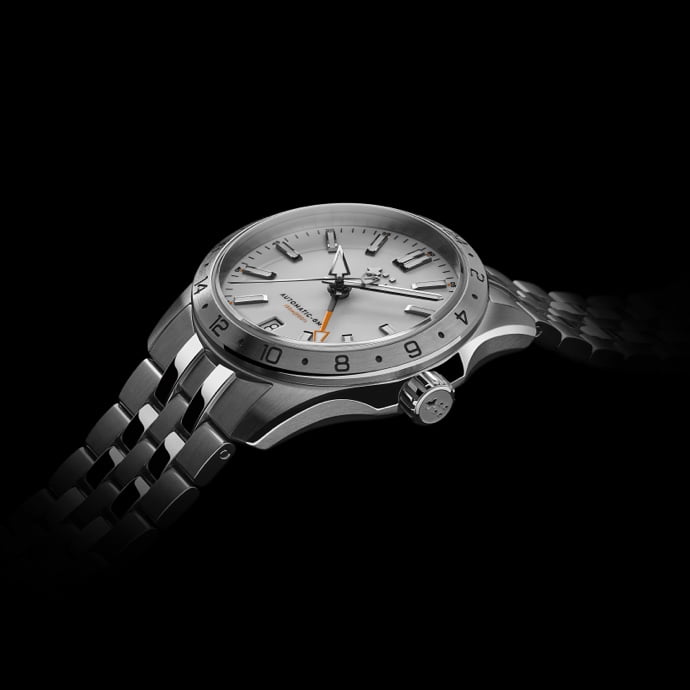
“It’s practical, nicely understated and suits a wide range of wrists”
And that’s a description equally applicable to the new C63 Sealander 36 GMT, the latest addition to the smaller incarnation of the bestselling Sealander line. With watch diameters trending down over recent years, and 36mm now back on many a radar, the Sealander 36 three-hand automatic has been a hit since it was launched in July 2022.
Time to expand the range, and a GMT was the obvious way to do so. “Watches that are relatively small and thin – and sub-12mm is impressive for a GMT – but still feel robust have their own distinct appeal,” says CW CEO and co-founder, Mike France. “Wearing a smaller watch feels fabulously nostalgic, recalling a time when a watch’s job was to tell the time, not to dominate conversation.”
And then there’s the fact that the GMT is such a useful complication: designed to be worn on trips, they accompany us as we generate cherished memories – while simultaneously reminding us of home. As with most current watches, this GMT is the ‘caller’ version of the complication. No, the second hour hand can’t be independently set, which means getting everything set up for each trip takes a tiny bit longer – but what journey didn’t involve plenty of waiting around – when having something useful to do might actually prove a relief?
“The 39mm Sealander GMT consistently outsells the Automatic,” says CW Product Designer William Brackfield. “Indeed, the white version is the best-selling watch we make. But in some ways the 36 GMT is even more ‘Sealander’: svelte, stylish, and still chunky enough to shrug off anything you might throw at it – including a dive to the bottom of the ocean. The magic of 36mm is that it’s practical, nicely understated and suits a wide range of wrists.”
It also outperforms expectations in a number of ways. It’s water-resistant to 150m; has a 56-hour power reserve, up from the automatic Sealander’s 38 hours; and it comes in three universally appealing colours: Black, White, and the on-trend ‘Dragonfly Blue’, with the latter’s sunray finish dancing in the light.
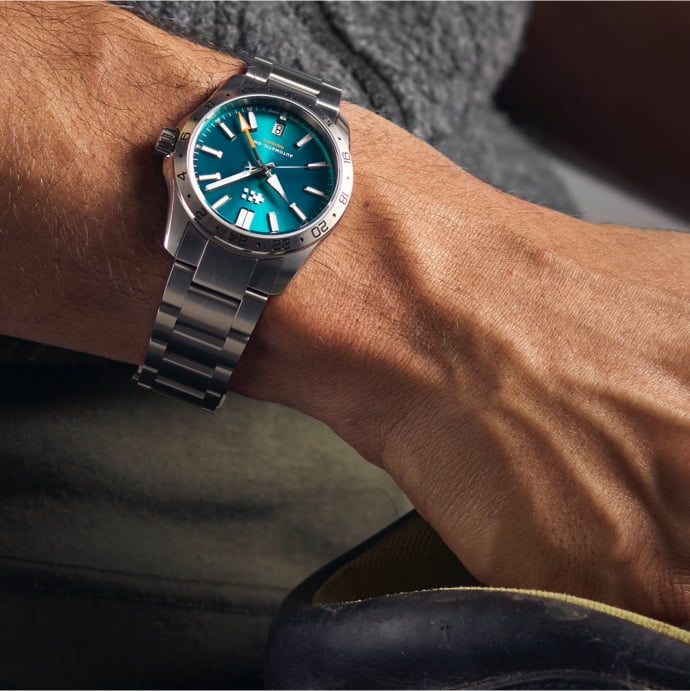
”At this accessible price point – the Sealander 36 GMT is on its own”
Price-wise, of course, it’s incredibly accessible – one of the real charms of Sealander. The GMT comes in at £905 on an orange Aquaflex rubber strap or Camel Vintage Oak leather, and £1,020 on the sporty Bader bracelet or £1,060 on the dressier Consort. “Offering two different bracelets shows commitment to this smaller size,” says William. “We’re one of few brands which takes bracelets this seriously – and, of course, our quick-release mechanism makes swapping between easy.”
And then there’s perhaps the most intriguing thing about this watch – one that even the guys at Christopher Ward were thrilled to discover. Despite the fact that the first GMT-Masters were 38mm, modern GMTs at that size are ultra-rare, and virtually nobody offers a 36mm GMT today. Yes, there’s still a Glycine Airman in the size, and a handful of indies do them too, but in terms of current, mass-market, mainstream GMTs – and certainly at this accessible price point – the Sealander 36 GMT is on its own.
Finally, back to James Bond. Creator Ian Fleming’s most famous personal piece was an unassuming Rolex Oyster Perpetual Explorer, ref 1016: big numbers, highly readable, no date, and – yes – 36mm across. And it’s this watch that was the inspiration behind the “heavy Rolex Oyster Perpetual on an expanding metal bracelet” that 007 used as a knuckleduster to crack a henchman’s jaw in On Her Majesty’s Secret Service.
And if a 36mm Swiss-made mechanical watch is good (and tough) enough for Commander Bond, then it’s perfect for the rest of us. Especially, like the C63 Sealander 36 GMT, when it tells the time in two places at once.
The C63 Sealander 36 GMT is available from £905/$1150/€1040Related watches
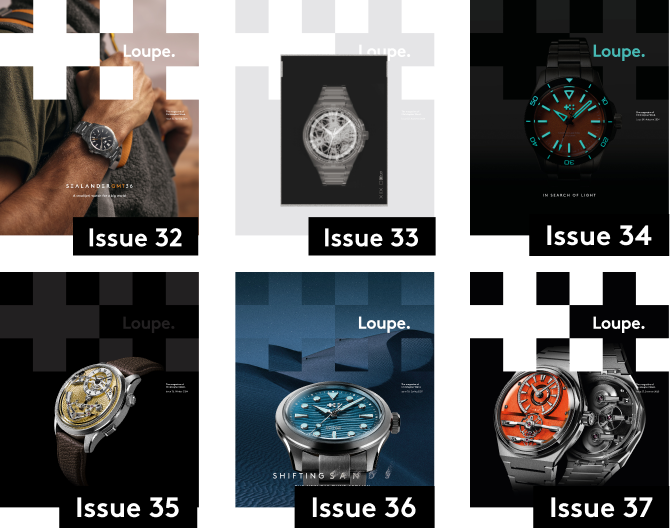
Sign up to Loupe magazine
Loupe is Christopher Ward’s quarterly in-house magazine. If you want to know what’s happening at CW (and you love great journalism), this is where to start. Alternatively, you can read all our back issues on your computer, tablet or phone.
Order your free copyRead Loupe online
